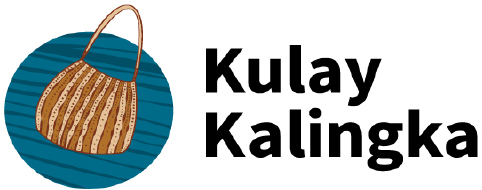The Kulay Kalingka Study was created by a team of Aboriginal and Torres Strait Islander researchers. The study design and Aboriginal and Torres Strait Islander leadership will allow for better cancer outcomes and care for Aboriginal and Torres Strait Islander people across Australia.
At all stages of the study design, from the study creation and artwork design, through to data collection and data analysis, has been created and controlled by Aboriginal and Torres Strait Islander peoples. Read more about the Kulay Kalingka Study below.

Kulay Kalingka translates to “net bag in the water” in Ngiyampaa (Wongaibon) language.
Woven net bags have been used by rainforest Bama (peoples) to process highly toxic foods, whereby foods are placed in net bags and run through a slow-moving stream to leach out their toxins and make them safe over time.
This concept is woven into the Kulay Kalingka Study: the net bag is symbolic of how people and families fighting cancer can include Aboriginal and Torres Strait Islander health and wellbeing concepts for cultural, medicinal and spiritual healing, alongside clinical treatments.
Our logo and artwork were designed by Bernard Lee Singleton, an accomplished craftsman, curator and designer, born and living in Cairns. Singleton grew up in Coen, Cape York. His mother is a Djabuguy woman born in Mona Mona mission near Kuranda and his father is an Umpila (east coast Cape York)/Yirrkandji man from Yarrabah mission.
Bernie has used the WURRURRI-L (extracting) concept to reflect on his own personal experiences, including how we treat our bodies and the impact on Aboriginal and Torres Strait Islander health and wellbeing.







